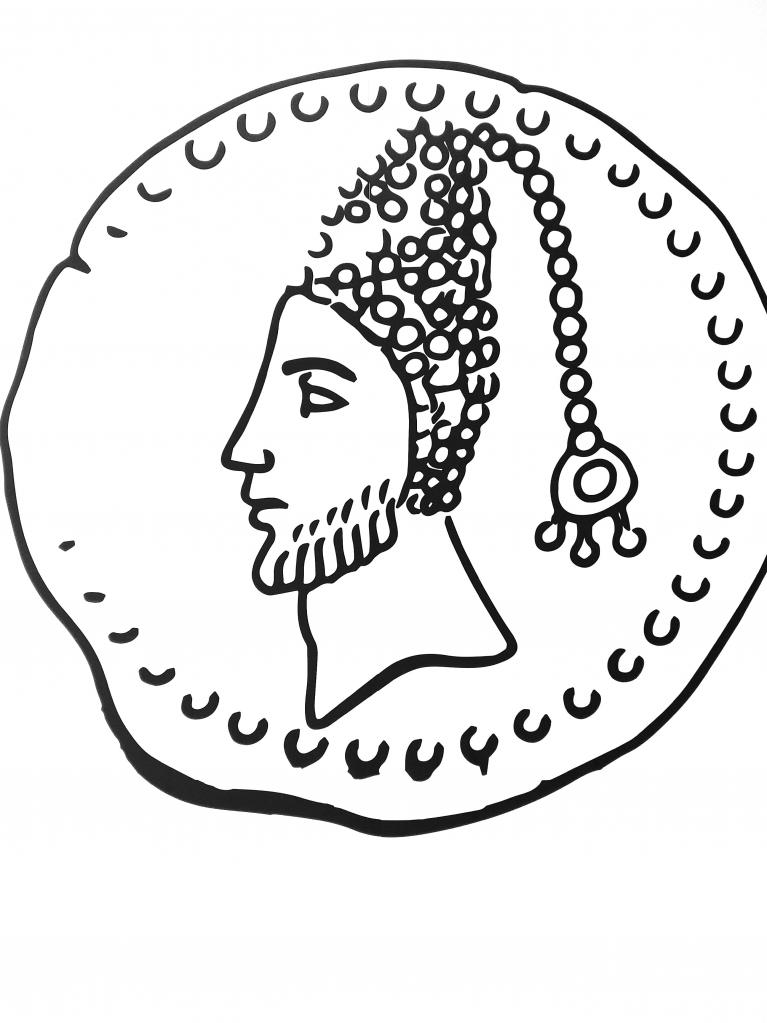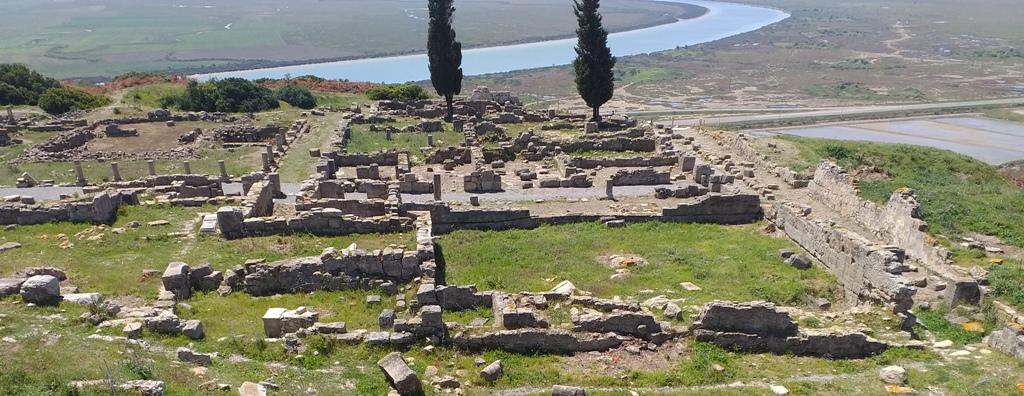Cette section comprend 4 pages:
P 1- Histoire du site( en langue française)
P 2- Histoire du site( en langue arabe)
P3-Histoire du site( en langue espagnole)
P 4- Histoire du site( en langue anglaise)
يتكون 4 ?????:
يتكون هذا الجزء من اربع صفحات:
1 - ص1: خاصة بتاريخ الموقع باللغة الفرنسية
2- ص2: خاصة بتاريخ الموقع باللغة العربية
3 - ص3: خاصة بتاريخ الموقع باللغة الاسبانية
4- ص4: خاصة بتاريخ الموقع باللغة الانجليزية
Histoire du site:
Frise chronologique
1-1: l’époque phénicienne:
D’après la tradition, les origines de Lixus remonteraient à la fin du XIIème s. av. J.-C., date de la fondation du temple dédié au dieu phénicien Melakart. Cependant, les recherches archéologiques effectuées jusqu’à ce jour ne permettent guère de dépasser le VIIIème s. av. J.-C. A l’époque phénicienne, Lixus pouvait être considérée comme l’une des plus grandes métropoles de l’occident méditerranéen puisque la ville couvrait une superficie de 14 hectares. Depuis un comptoir phénicien sur les côtes atlantiques du Maroc, Lixus ou « Maqqom Chemech » (Lieu du soleil) phénicien s’est vite développée. La richesse et l’aisance des habitants de Lixus est manifeste dans les objets de luxe qu’ils ont pu importer de toutes les régions de la Méditerranée (Phénicie, Grèce, Chypre…).
1-2: l’époque maurétanienne:
C’est une phase qu’on peut situer entre la fin du VIème s. av. J.-C. et l’arrivée des romains en l’an 40 ap. J.-C. Nos informations sur cette phase demeurent lacunaires, mais nous pouvons affirmer que la ville n’a pas été complètement abandonné ; nous savons que les autochtones ont maintenus des relations commerciales avec les carthaginois (périple d’Hannon et objets archéologiques d’origine carthaginoise). La découvertes récente d’importantes nécropoles aux environs de Lixus, remontant à la même période (entre fin VIème et fin IVème s. av.J.-C.) démontrent que les lixitains ont su maintenir des contacts non seulement avec les carthaginois avec aussi avec plusieurs contrées de la Méditerranée orientale. Entre le IIIème s. av. J.-C. et l’an 40 ap. J.-C., et à l’instar du reste de la Maurétanie occidentale (le nord du Maroc), et sous le règne des rois maurétaniens, la ville connut un essor urbanistique caractérisé par la construction de demeures à plan typique de cette période, ainsi que des édifices publics (temples, curie, enceinte pour défendre la ville).
1-3: l’époque romaine :
C’est durant cette période que la ville de Lixus connut son apogée et son extension maximale. Comme toute les villes de l’Empire, elle a été dotée d’un certains nombre d’édifices publics : thermes, temples, basilique, un théâtre-amphithéâtre et d’une enceinte pour sa protection. Le quartier industriel spécialisé dans la fabrication des sauces de poisson devient le plus grand de toute la Méditerranée. De belles et spacieuses demeures richement décorées attestent le raffinement et l’aisance des lixitains.
1-4-l’époque tardive et islamique :
A partir de la fin du IIIème s. ap. J.-C., la ville de Lixus rentre dans une période qu’on appelle des siècles obscurs entre le IVème s. ap. J.-C. et l’avènement de l’Islam au courant du VIIIème s. ap.J.-C. Nos informations sur cette période sont insuffisantes pour retracer la vie de la ville, nous savons néanmoins qu’une partie du complexe industriel fonctionnait au moins jusqu’au début du Vème s. ap. J.-C., et une communauté chrétienne vivait dans la ville avant l’arrivée des musulmans. La ville est restée occupée jusqu’au XIVème siècle, mais d’après quelques textes arabes, elle va porter le nom de Choummis (ensoleillée), le géographe arabe El Bakri en fait la résidence d’un prince idrisside (première dynastie musulmane du Maroc), et rapporte qu’il s’agit d’une ancienne ville, entourée d’une muraille et peuplée. Archéologiquement, la phase islamique est représentée par une villa islamique avec patio, une mosquée, des fosses-dépotoirs et une importante quantité de mobilier archéologique surtout la céramique.




